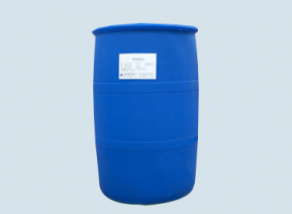The conversion method is also called two-step method. Firstly, low-carbon glucoside is formed by the reaction of glucose and low-carbon alcohol, and then high-carbon glucoside is formed by the alcohol exchange reaction of low-carbon glucoside and high-carbon alcohol. This method solves the problem of the solubility of glucose and high-carbon alcohol between raw materials, makes the synthesis easier to realize, and overcomes the disadvantage of producing caramel in the process of direct glycoside, but the process is complex, and the transformation of low-carbon glycoside and high-carbon glycoside is not complete generally.

At present, the synthesis of alkyl glycosides by transglycosidization mainly focuses on the improvement of catalysts, among which inorganic acids, such as HC1, H: S0, are the most effective ones. And h, P04, etc.; sulfonic acid catalysts, such as p-toluenesulfonic acid, alkylbenzenesulfonic acid, p-toluenesulfonic acid pyridine salt; in addition, supported heteropolyacids and strong acid type ion exchange resins, etc.; there are also two kinds of acids or several kinds of acids co catalysis.
In order to produce high-quality alkyl polyglycosides, it is necessary to dealcoholize and refine the alkyl polyglycosides. However, due to the high temperature in the process of dealcoholization, it will cause the thermal decomposition of glycosides and the condensation reaction of residual sugars to form colored substances, so decolorization will be carried out after dealcoholization to meet the production requirements.
Amino acid surfactant alkyl glucoside is a surface active agent which is reacted with amino acids with various fatty acids. It has mild nature, strong cleaning power, fine foam, high biodegradability and good compatibility with various surfactants. It is an ideal substitute for traditional surfactants AES and K12 in personal care products.
There are many kinds of amino acid surfactants. For example: sodium n-lauroylglutamate (potassium), sodium n-lauroysarcosinate (potassium), sodium n-lauroylglycine (potassium), sodium cocooylglutamate and so on. In recent years, the recognition of personal care products containing amino acid surfactants in the market is getting higher and higher. Therefore, today we are discussing the problem of system thickening when amino acid surfactants are applied in the formula.
When it comes to thickening of surface active system, formula engineers are not new. In short, there are several ways to thicken personal care products: reinforcement materials, adding salt, adding surfactant with thickening ability, adding polymer, adding solid oil, etc.; however, thickening of amino acid surfactant system is different from the traditional surface active system, which can not be thickened with salt, nor can it The thickening method of AES and cab can be used, especially when the surface active content of amino acids is high, the system is more difficult to thicken.